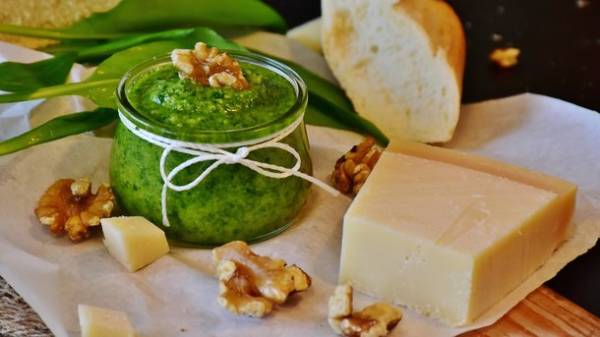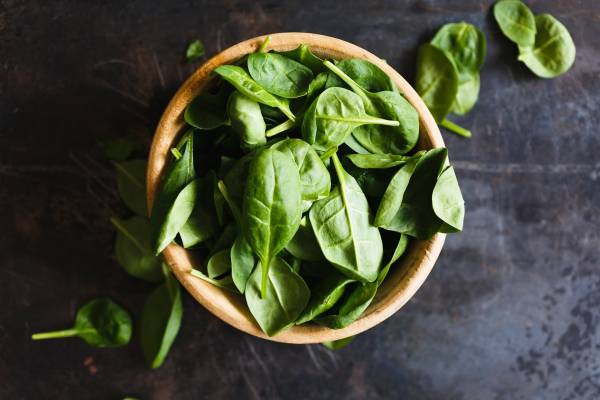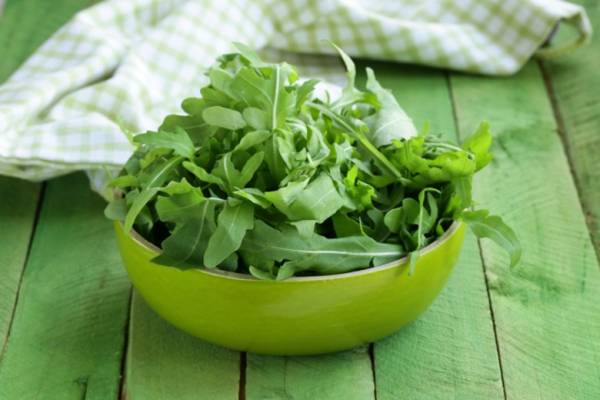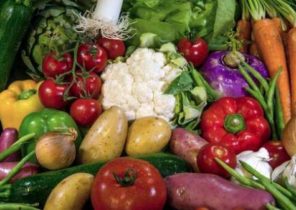
Greens — the same assistant, who can now add bright colors to our menu and support the exhausted cold weather the body with the necessary vitamins and trace elements — until the season of fresh vegetables and fruits. Gone are the days when the only available for Housewives in this time of year was parsley and dill. Today the shelves zelenshchikov on the vegetable markets and supermarket shelves beckon with the variety and some exotics a long and firmly settled at our tables.
We have identified the three most popular spicy plants and found out what they are useful for us, how they are best eaten. To help us in this dietitian, expert nutrition and lifestyle Elena Kalchuk and chef Natalia Popova.
SPINACH

WHAT IS USEFUL? Besides a rich set of vitamins and minerals, the unique spinach that protein content in the leaves, he is second only immature fruits peas and beans. Due to the high level of fiber, spinach can be compared with the “broom” for the intestines: it normalizes the intestinal peristalsis and regular use can completely eliminate constipation. The use of spinach strengthens teeth and nails, promotes skin rejuvenation and splendor of the hair. And the iron contained in spinach, prevents the formation of cellulite.
WHAT IS DANGEROUS? Should be used with caution for people with diseases of the urinary tract, stones in the gall bladder and kidneys as well as gout.
WHAT TO EAT? Spinach not only not afraid of heat treatment, but acquires a new character. Fresh spinach leaves — a valuable ingredient for green salads. But if the greens slightly pripustit in a small amount of butter or olive oil — you can get a tasty and healthy side dish to fish dishes. Poached spinach also is a great complement to omelettes and casseroles, and is a great filling for lasagna and ravioli.
BASIL

WHAT IS USEFUL? It is rich in vitamins C, B2, PP, provitamin a, Stimulates the immune system and supports the body in fighting off infections, and its leaves have antibacterial, diaphoretic and antipyretic properties. Helps to strengthen the nerves, improve sleep quality and even increase the potency. And the substances included in the composition of its essential oils help to protect against cancer.
WHAT IS DANGEROUS? Doctors do not recommend to use the Basil for those who suffer from diabetes, epilepsy and heart disease. Also it is necessary to limit its use to pregnant women and children up to seven years.
WHAT TO EAT? Basil — the king of Italian cuisine, the main ingredient of the famous pesto sauce. Goes well with tomatoes and soft cheese. The leaves of this seasoning are perfectly combined with dishes of meat and poultry and help to unlock the flavours of the other spices — rosemary, thyme, tarragon. The versatility of the Basilica is that it is good for dessert drinks: tea with Basil leaves gets bright flavor and aroma, and lemonade with Basil very refreshing.
ARUGULA

WHAT IS USEFUL? The composition of the salad includes vitamins E, K and beta-carotene. Its leaves contain zinc, magnesium, selenium, sodium, copper, phosphorus, manganese and iron. Just 100 g of arugula completely satisfy the daily requirement for vitamin K, which is essential in the healing of wounds. The use of this greenery has a positive effect on the gastrointestinal tract and the metabolism and biologically active substances in the composition of arugula, strengthen the immune system, increase hemoglobin level and reduce the level of blood sugar.
WHAT IS DANGEROUS? The only thing that could prevent you to consume this herbs — idiosyncrasy and Allergy.
WHAT TO EAT? Bright, distinctive taste of the arugula complements mixed green salad — lettuce, iceberg lettuce, Lola Rossa, frisee, and others. Ideal to accompany meat, spicing up dishes on the grill. But subjected to heat treatment, the arugula is not: it loses its unique taste and aroma. By the way, greenhouse greens has a more mild flavor than their ground cousins. But if you’re a fan of spicy arugula from the garden — your option.
RECIPE FROM THE CHEF: PESTO SAUCE
- 50 g Basil leaves
- 20 g roasted pine nuts
- 150 ml olive oil
- 60 g Parmesan
- 10 g garlic
All the ingredients are crushed using a blender, at the end add the grated Parmesan. In the home and economical option pine nuts you can substitute roasted pumpkin seeds. If you are not a fan of Parmesan — substitute it with lemon juice to taste. This sauce can be used for cooking pasta, Caprese salad and any other dishes that will suit your taste. Experiment!








